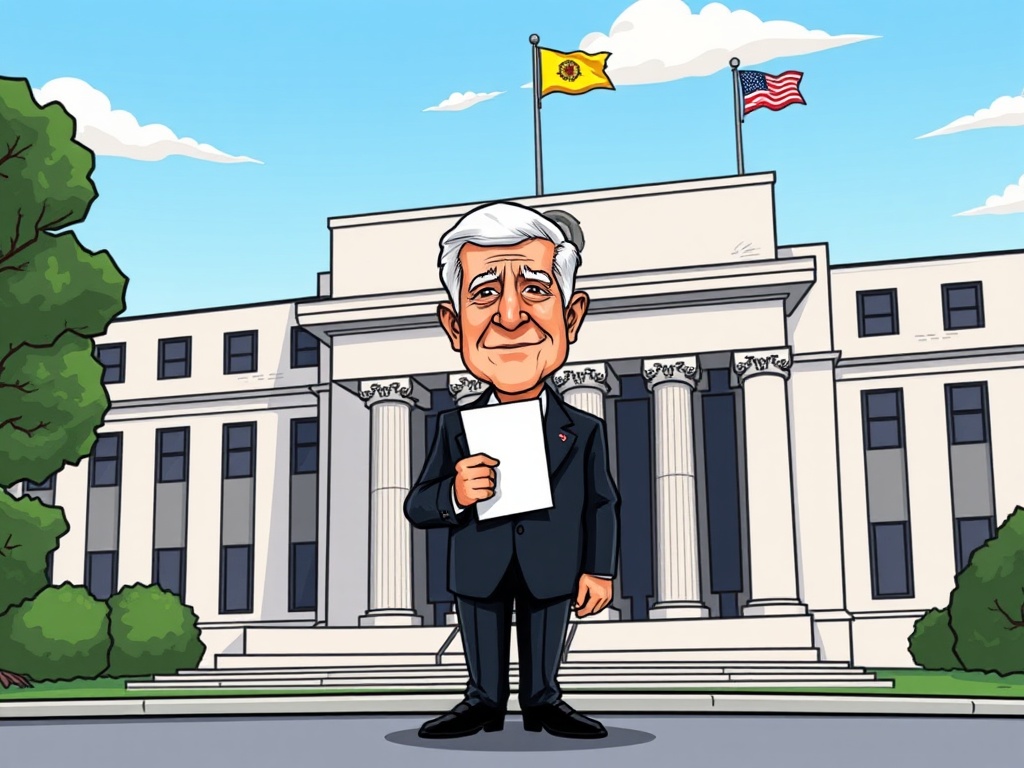BitcoinWorld

Asia FX: Crucial Insights into Weekly Losses Amidst Strong Dollar and Federal Reserve Concerns
In the dynamic world of global finance, every ripple in major economic policies sends waves across continents. For those keenly observing the cryptocurrency landscape, understanding broader macroeconomic shifts is vital, as these often dictate liquidity, investor sentiment, and capital flows. Currently, the spotlight is on Asia, where Asia FX is grappling with significant weekly losses. This downturn is largely attributed to the relentless ascent of the strong dollar and persistent concerns surrounding the Federal Reserve‘s monetary policy. What does this mean for the global currency market, and how are emerging markets navigating these turbulent waters?
Understanding the Pressure on Asia FX: What’s Causing the Downturn?
Asian currencies have found themselves under considerable strain, experiencing a challenging week that has led to widespread depreciation against the US dollar. This trend is not isolated but a direct consequence of a confluence of factors that are reshaping the global financial landscape. The primary drivers behind the current weakness in Asia FX include:
- Interest Rate Differentials: As the Federal Reserve maintains a hawkish stance, or even signals a prolonged period of higher rates, the yield differential between US assets and those in Asia widens. This makes dollar-denominated assets more attractive, drawing capital away from Asian markets.
- Economic Slowdown Concerns: While some Asian economies show resilience, broader concerns about global economic growth, particularly in key trade partners, can weigh on export-dependent nations, impacting their currency valuations.
- Geopolitical Tensions: Any escalation in geopolitical risks can lead to a flight to safety, with investors preferring stable, liquid assets like the US dollar over perceived riskier emerging market currencies.
- Commodity Price Volatility: Many Asian economies are net importers of commodities. Spikes in commodity prices, especially oil, can worsen trade balances and put downward pressure on local currencies.
Specific currencies like the Japanese Yen, South Korean Won, and Chinese Yuan have been particularly sensitive to these pressures, reflecting the broader trend of weakness across the region’s foreign exchange markets.
The Unstoppable Rise of the Strong Dollar: Why Does it Matter So Much?
The US dollar’s dominance is not new, but its recent strength has been particularly pronounced, acting as a major headwind for other global currencies. The dollar’s status as the world’s primary reserve currency and a safe-haven asset means that during times of uncertainty, capital flows towards it. But what exactly is fueling this current surge, and why does a strong dollar have such a profound impact?
The dollar’s strength can be attributed to several key factors:
- US Economic Resilience: Relatively robust economic data from the United States, including strong employment figures and better-than-expected GDP growth, often reinforces expectations of higher interest rates or a longer period of tight monetary policy by the Federal Reserve.
- Inflation and Interest Rate Expectations: Persistent inflation in the US, even as it moderates, keeps the Fed on guard. This leads to market expectations of higher-for-longer interest rates, which directly boosts the appeal of dollar-denominated investments.
- Global Risk Aversion: When global economic or geopolitical risks escalate, investors typically flock to the safety of the US dollar. This ‘flight to quality’ strengthens the dollar against a basket of other currencies.
The ramifications of a strong dollar are far-reaching. For Asian economies, it makes imports more expensive, potentially fueling inflation. It also increases the burden of dollar-denominated debt for governments and corporations, as more local currency is needed to service these obligations. Furthermore, it can make Asian exports less competitive on the global stage, dampening economic growth prospects.
Decoding the Federal Reserve’s Influence: What’s Next for Global Markets?
At the heart of the current currency market dynamics lies the Federal Reserve. The US central bank’s monetary policy decisions, particularly regarding interest rates, have an unparalleled influence on global capital flows and currency valuations. Market participants are constantly scrutinizing every statement and economic projection from the Fed for clues about future policy direction.
Here’s how the Federal Reserve’s actions and signals play a pivotal role:
- Interest Rate Decisions: Higher interest rates in the US increase the attractiveness of dollar assets, drawing capital away from other regions, including Asia. Even the expectation of rate hikes can cause significant shifts.
- Quantitative Tightening (QT): The Fed’s balance sheet reduction, or QT, removes liquidity from the financial system. This can tighten global financial conditions, pushing up borrowing costs and strengthening the dollar.
- Forward Guidance: The Fed’s communication about its future policy intentions is critical. Any hint of a more hawkish or dovish stance can trigger immediate market reactions, influencing everything from bond yields to currency pairs.
The market’s current concern stems from the possibility that the Federal Reserve might need to keep interest rates elevated for longer than previously anticipated to bring inflation fully under control. This ‘higher for longer’ narrative fuels dollar strength and adds pressure on currencies in countries where central banks may not be able to match the Fed’s hawkishness due to domestic economic considerations.
Navigating the Volatile Currency Market Landscape: Strategies for Resilience
The current environment highlights the inherent volatility of the global currency market. For businesses, investors, and even individuals engaged in international transactions, understanding and adapting to these fluctuations is crucial. The constant interplay of economic data, central bank policies, and geopolitical events creates a complex tapestry of movements.
Key characteristics of the current currency market:
- Increased Volatility: Rapid and unpredictable swings in exchange rates are becoming more common, driven by fast-changing market sentiment and data releases.
- Divergent Monetary Policies: Central banks globally are at different stages of their monetary policy cycles, leading to significant interest rate differentials that drive carry trades and capital flows.
- Safe-Haven Flows: Periods of heightened uncertainty consistently lead to capital flowing into traditional safe-haven currencies, predominantly the US dollar, but also the Japanese Yen and Swiss Franc in certain scenarios.
For those operating in this environment, managing currency risk is paramount. This can involve hedging strategies, diversifying currency exposures, or carefully timing international transactions to mitigate adverse movements. Businesses with significant international trade exposure must remain agile, monitoring exchange rates closely and adapting pricing strategies as needed.
Impact on Emerging Markets: A Ripple Effect Across Developing Economies?
While the focus is often on major currencies, the effects of a strong dollar and hawkish Federal Reserve policies are particularly acute for emerging markets. These economies, often more vulnerable to external shocks, face a unique set of challenges when global financial conditions tighten.
The ripple effect on emerging markets manifests in several ways:
- Capital Outflows: As US interest rates rise, investors tend to pull capital out of riskier emerging markets in search of higher, safer returns in dollar-denominated assets. This outflow weakens local currencies and can depress asset prices.
- Increased Debt Burden: Many emerging market governments and corporations have borrowed heavily in US dollars. A stronger dollar means they need more local currency to repay these debts, increasing the risk of default and financial instability.
- Imported Inflation: For countries reliant on imports, a weaker local currency makes imported goods, especially commodities like oil, more expensive. This can exacerbate domestic inflation, forcing central banks to raise rates, potentially stifling economic growth.
- Reduced Export Competitiveness: While a weaker currency can theoretically boost exports by making them cheaper, the overall global demand environment and supply chain disruptions can offset this benefit, especially if a strong dollar is symptomatic of a global slowdown.
Despite these challenges, some emerging markets with strong fundamentals, diversified economies, and prudent fiscal policies may show greater resilience. Their ability to attract foreign direct investment (FDI) and maintain stable political environments can help cushion the blow from external pressures.
Challenges and Actionable Insights for the Road Ahead
The current currency dynamics present both challenges and a few potential opportunities for various stakeholders. The primary challenges include:
- Inflationary Pressures: A weaker local currency contributes to imported inflation, squeezing consumer purchasing power and potentially leading to social unrest.
- Financial Instability: For highly indebted nations or corporations, a strong dollar increases default risks and can trigger broader financial instability.
- Economic Slowdown: Tighter financial conditions and reduced export competitiveness can lead to slower economic growth or even recession in some regions.
However, there are also actionable insights and potential opportunities:
- For Businesses: Diversify supply chains, hedge currency exposure, and explore opportunities in markets where your local currency’s relative strength might provide an advantage. Focus on operational efficiency to mitigate rising import costs.
- For Investors: Re-evaluate portfolio allocations, consider assets that perform well in a strong dollar environment (e.g., US equities), and look for resilient companies in emerging markets with strong balance sheets and domestic demand.
- For Policymakers: Implement prudent fiscal policies, build foreign exchange reserves, and explore regional trade agreements to reduce reliance on a single dominant currency.
Monitoring key economic indicators, central bank communications, and geopolitical developments will be paramount for making informed decisions in this evolving environment.
Conclusion: Navigating the Waves of Global Currency Shifts
The current weekly losses in Asia FX, driven by the persistent strength of the strong dollar and the hawkish stance of the Federal Reserve, underscore the interconnectedness of global financial markets. While emerging markets bear a significant brunt of these pressures, the entire currency market is experiencing heightened volatility and shifting dynamics. Understanding these forces is not just for economists or traders; it impacts everything from the price of everyday goods to the stability of national economies. As the global economic narrative continues to unfold, adaptability, informed decision-making, and a keen eye on macroeconomic indicators will be crucial for navigating these turbulent financial waters. The ability to anticipate and respond to these shifts will determine resilience and success in the coming months.
To learn more about the latest Forex market trends, explore our article on key developments shaping the US Dollar and interest rates.
This post Asia FX: Crucial Insights into Weekly Losses Amidst Strong Dollar and Federal Reserve Concerns first appeared on BitcoinWorld and is written by Editorial Team





